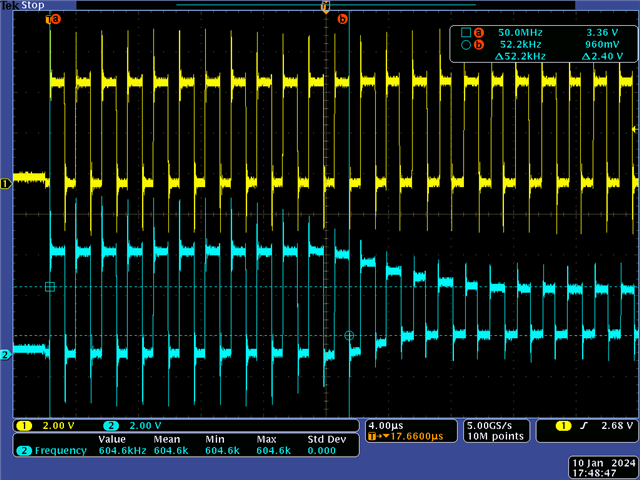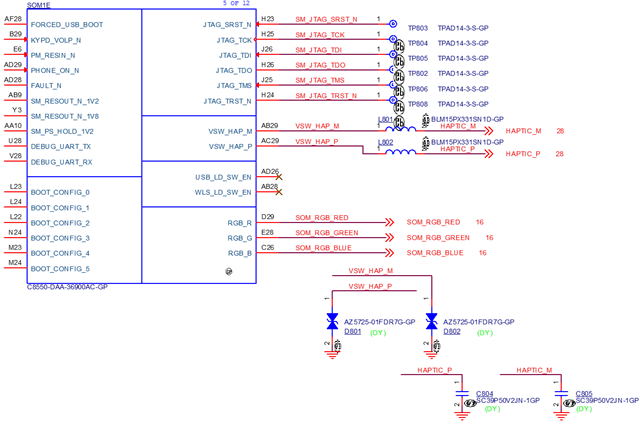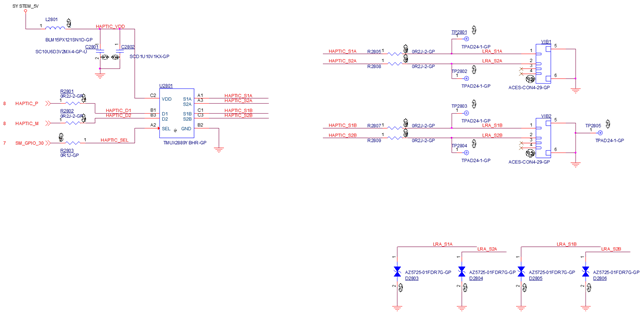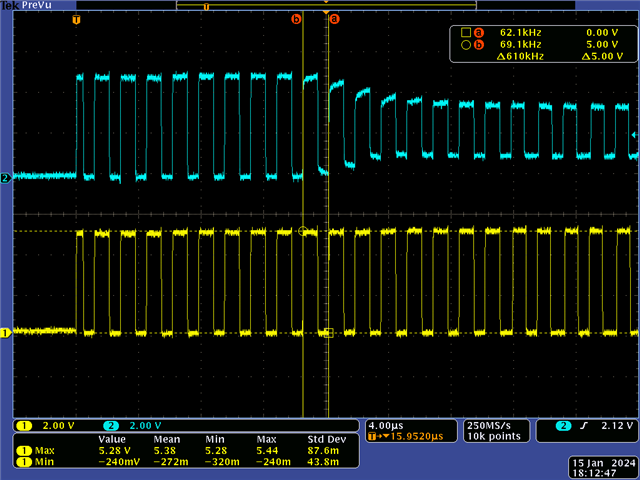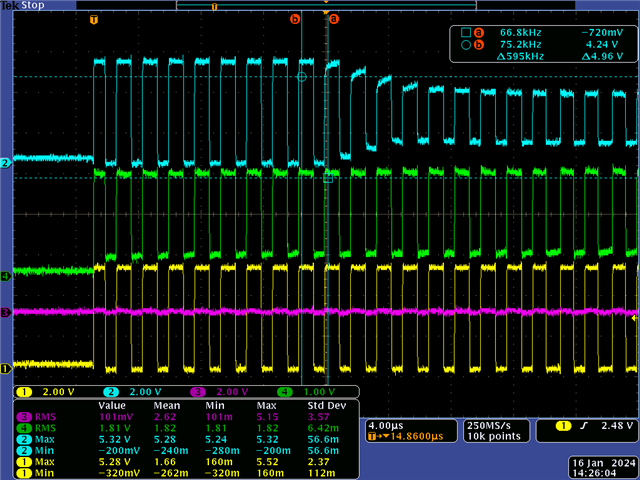part number: TMUX2889
Hi TI,
In the TMUX2889 datasheet page. 10 - Figure 6-14. Insertion loss versus frequency,
We can see there is no insertion loss at <1MHz.
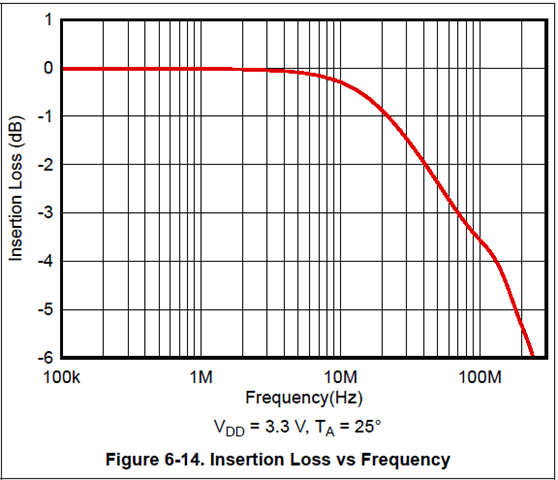
But we send the 600Khz/5V PWM signal to the D1/D2 pin as input.
After 10 cycles we see voltage decay.
CH1 => TMUX2889 D1 pin, CH2 => TMUX2889 S1A pin.
Why?
